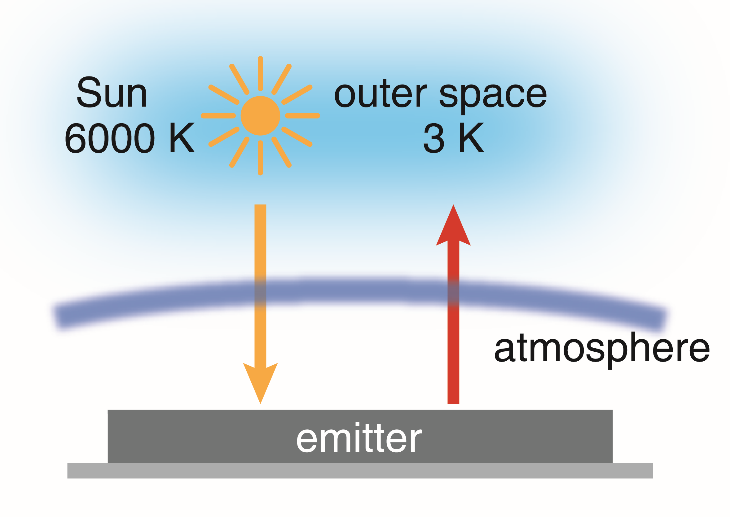Author: XIE Fei |
Radiative cooling is a ubiquitous passive cooling process that radiates heat out to the universe through the atmospheric transparency window. Recent advances in nanophotonics have enabled latest breakthroughs in daytime radiative cooling and have inspired intense research efforts in this field.
Radiative cooling is now at the forefront of renewable energy research, with important implications in energy consumption reduction and global warming mitigation.
In a recent review article published in Nature photonics, Prof. LI Wei from Changchun Institute of Optics, Fine Mechanics and Physics (CIOMP) of the Chinese Academy of Sciences (CAS) collaborated with Prof. FAN Shanhui from Stanford University discussed photonics and thermodynamics concepts in radiative cooling.
This review article discusses the fundamental concepts of radiative cooling and summarizes recent advances in daytime radiative cooling. In order to achieve sub-ambient daytime radiative cooling, the emissivity and absorptivity profile of the cooler need to be controlled in detail. From a photonic perspective, photonic structures can significantly tailor the emissivity and absorptivity. In general, the relevant length scale of the structure determines the strength of the interaction between light and structure. Exploiting this property can construct spectrally selective structures that only strongly interact with part of the spectrum, and many applications such as solar cell cooling, thermal management of outdoor colored objects and cooling textiles have been proposed.
From a fundamental thermodynamic point of view, usable work can be extracted from two reservoirs with different temperatures. Similarly, usable work can also be extracted from the outgoing thermal radiation from the Earth to outer space. A thermoelectric generator can be connected between the radiative cooler and the ambient to generate electricity, because the radiative cooler can reach a temperature below the ambient air temperature. In addition, the photovoltaic power generation can also be used for harvesting outgoing thermal radiation. During a photovoltaic cell exchanges radiation with a thermal emitter at a temperature below the cell temperature, the net outgoing thermal radiation from the cell to the emitter leads to a difference between the generation and recombination current within the cell. This difference in the cell can generate a net electric current that can be used to provide electrical energy to external devices.
Radiative cooling has become an important new direction of renewable energy research and has wide application potential. This review article can help readers better understand photonics and thermodynamics concepts in radiative cooling and promote its application and development.

Fig.1 Daytime radiative cooling (Image By XIE)
LI Wei
GPL Photonics Laboratory Changchun Institute of Optics, Fine Mechanics, and Physics
E-mail: weili1@ciomp.ac.cn
